Dose Titration Calculator
Find your safe, step-by-step medication adjustment plan. Based on FDA guidelines and clinical studies, this tool helps you work with your doctor to minimize side effects while reaching your target dose.
Your Personalized Titration Plan
Based on clinical guidelines from FDA and 2022-2023 studies, this plan minimizes side effects while reaching your target dose.
| Week | Dose (mg) | Notes |
|---|
Track Your Progress: Log side effects daily using this template:
- Time taken
- Side effects (e.g., dizziness, nausea)
- Severity (1-10)
- Activity during occurrence
Why Dose Titration Matters More Than You Think
Have you ever started a new medication and felt like you were hit by a truck? Nausea, dizziness, insomnia, or anxiety that made you want to quit? You’re not alone. For many people, the problem isn’t the drug itself-it’s how fast it was turned up. Dose titration isn’t just a medical buzzword. It’s the difference between tolerating your treatment and being crippled by it. This isn’t about taking less medicine. It’s about finding the exact amount your body can handle without wrecking your day.
Think of it like adjusting the volume on a speaker. Turn it up too fast, and your ears ring. Too slow, and you miss the music. Medications work the same way. Some drugs, like stimulants for ADHD or blood thinners like warfarin, have a razor-thin line between helping and harming. Start at the full dose? You risk side effects that send you running. Titrate slowly? You give your body time to adapt. Studies show this approach cuts initial side effects by 40-60%.
How Dose Titration Actually Works
Dose titration means slowly increasing (or decreasing) a medication’s strength over time. It’s not guessing. It’s a step-by-step plan built into the drug’s FDA-approved labeling. For example, venetoclax-a leukemia drug-starts at 20mg per day and climbs over five weeks to 400mg. Why? To avoid tumor lysis syndrome, a life-threatening reaction. Lamotrigine, used for epilepsy and bipolar disorder, takes five weeks to reach full dose because going too fast can trigger a deadly skin rash called Stevens-Johnson syndrome.
For ADHD medications like Adderall or Vyvanse, doctors typically start at 25-50% of the target dose. If the goal is 20mg per day, you begin with 5mg. Wait 3-7 days. If you feel okay, bump it to 10mg. Then 15mg. Then 20mg. That’s not laziness. That’s science. A 2022 study in ADDitude Magazine found that 78% of ADHD patients needed at least one dose change during their first titration. Only 41% of those who skipped titration reported manageable side effects. The rest quit.
When Slow Is Faster Than Fast
It sounds backwards, but going slow actually gets you to the right dose faster-because you don’t quit. When doctors jump straight to the full dose of a beta-blocker for heart failure, 45% of patients stop taking it due to fatigue, dizziness, or low blood pressure. With titration? That number drops to 18%. That’s not a small win. That’s life-changing.
Same goes for antidepressants. Starting low with sertraline or fluoxetine reduces nausea and agitation in the first week. That’s when most people give up. But if you start at 25mg instead of 50mg, your body adjusts. You’re more likely to stick with it. And if you stick with it, you get better. A 2021 meta-analysis in the Journal of Clinical Psychopharmacology confirmed: patients who titrated were twice as likely to reach their target dose and stay on treatment.
Some drugs need more time. Non-stimulant ADHD meds like atomoxetine take 8-12 weeks to fully kick in. Levothyroxine for hypothyroidism requires 4-6 weeks between each 25mcg increase. Why? Because your thyroid system reacts slowly. Rushing it causes heart palpitations or bone loss. Patience isn’t optional here-it’s protective.
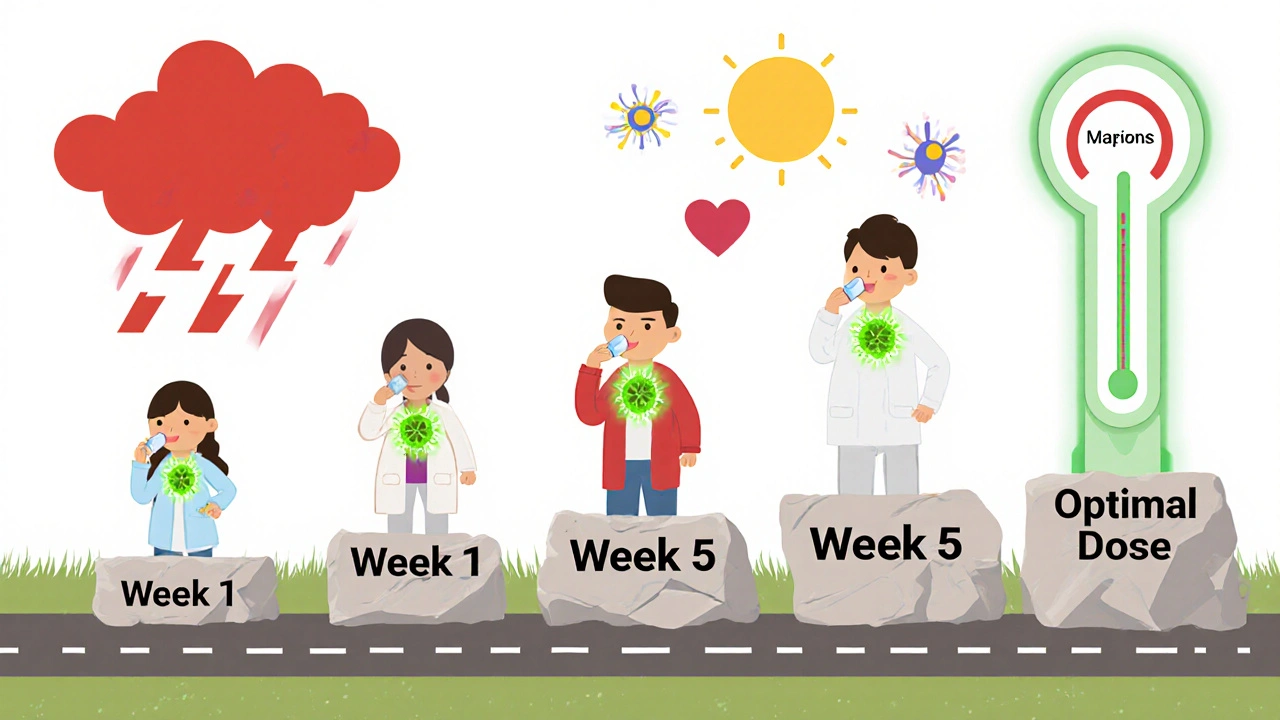
What Your Doctor Should Be Doing
A good titration plan isn’t a one-size-fits-all script. It’s personalized. Your age, weight, liver function, other meds, and even your genetics matter. For example, some people metabolize drugs slower due to CYP450 enzyme variations. That’s why pharmacogenetic testing is now available for 28 medications-and will expand to 12 more by 2025. If your doctor doesn’t ask about your family history or recent lab results, they’re flying blind.
Here’s what a real titration plan looks like:
- Week 1-2: Start at 25-50% of target dose
- Week 3-4: Increase by 10-25% if no major side effects
- Week 5-6: Assess symptoms and side effects with a 1-10 scale
- Week 7+: Adjust based on feedback, not just numbers
Weekly check-ins are non-negotiable during active titration. Monthly visits are standard after stabilization. If your doctor says, “Take this, call me if something’s wrong,” they’re not following best practices. The American Medical Association reports 87% of prescription drugs requiring precise dosing now include formal titration protocols in their labeling. That’s not optional. That’s standard care.
The Role of Tracking and Communication
Titration fails when patients don’t track what’s happening. You can’t tell your doctor you feel “a little off” if you don’t know what that means. The most successful patients use simple logs. Write down:
- Time you took the medication
- Side effects (headache? dry mouth? jitteriness?)
- Severity (1-10)
- What you were doing when it happened
On Reddit’s r/ADHD community, 68% of posts about medication mentioned titration. The top positive comment? “I kept a side effect journal. My doctor saw I was fine at 10mg but crashed at 15mg. We stopped there.” That’s not luck. That’s data.
Also, timing matters. Taking meds with food reduces stomach upset. Taking them at the same time every day (within 30-60 minutes) keeps levels steady. Skipping doses or taking them late throws off the whole process. And don’t assume side effects are “normal.” If you’re dizzy every afternoon, that’s not aging. That’s a sign your dose is too high.
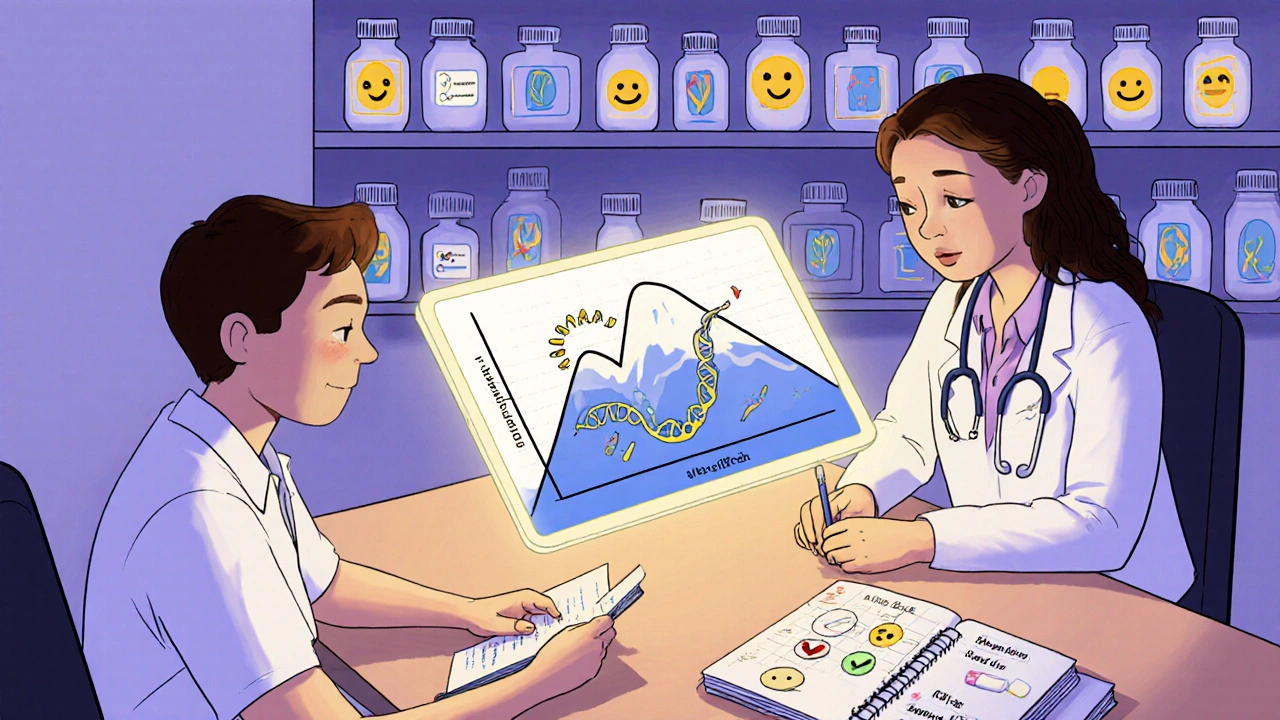
When Titration Doesn’t Work-or Isn’t Safe
Titration isn’t magic. It doesn’t work in emergencies. If you’re having a seizure, you don’t wait four weeks to get to the right dose of perampanel. You give the full dose immediately. Same with anaphylaxis or acute heart attack. Titration is for chronic conditions where safety matters more than speed.
Some patients struggle with adherence. A 2021 study in the Journal of Clinical Pharmacy and Therapeutics found 32% of people don’t follow titration schedules. Why? Too many appointments. Too much tracking. Too long to wait. That’s why digital tools are changing the game. The FDA-cleared TitrationTracker app, launched in January 2023, uses AI to predict dose changes based on your daily input. In a 1,200-patient trial, it reduced side effects by 32% compared to standard care.
But access is unequal. In low-income countries, only 22% have standardized titration protocols for essential meds, according to the WHO. If you’re in a rural area with no specialist, your doctor might skip titration out of necessity. That’s a systemic problem-not your fault.
What You Can Do Today
You don’t need a PhD to do titration right. Here’s your action plan:
- Ask your doctor: “Is there a titration schedule for this drug?”
- If they say no, ask: “What’s the starting dose? How often should I increase it?”
- Get a notebook or download a free symptom tracker app.
- Take your medication at the same time every day.
- Don’t skip doses-even if you feel fine.
- Report even small side effects. Don’t wait until it’s unbearable.
- Ask about pharmacogenetic testing if you’ve had bad reactions to meds before.
If your doctor pushes you to start at the full dose without a plan, get a second opinion. You’re not being difficult. You’re being smart.
What’s Next for Dose Titration
The future of titration is personalized. By 2030, the American College of Clinical Pharmacology predicts 75% of high-risk medications will use genetic markers to determine your starting dose. Imagine walking into a clinic, getting a simple cheek swab, and walking out with a dose tailored to your body-not the average person’s. That’s not sci-fi. It’s coming.
Right now, the tools exist. The data exists. The guidelines exist. What’s missing is consistency. Too many patients still get thrown into full doses like they’re on a rollercoaster with no safety harness. Titration isn’t a luxury. It’s the bare minimum for safe, effective care. If you’re on a medication with known side effects, insist on a plan. Your body will thank you.

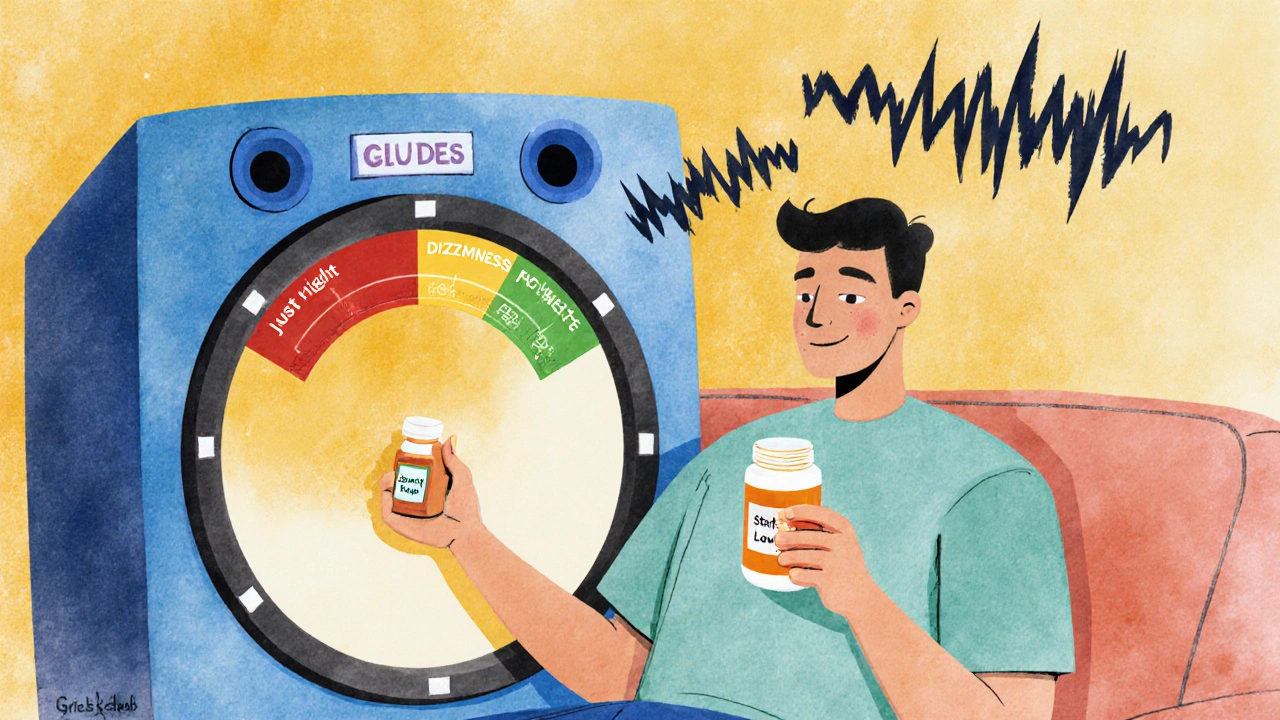

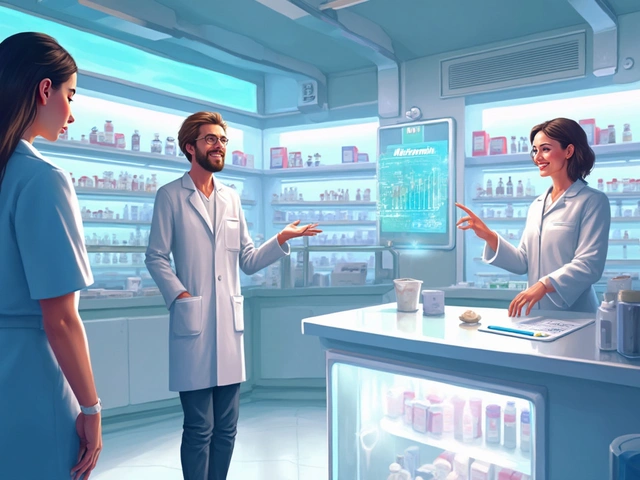
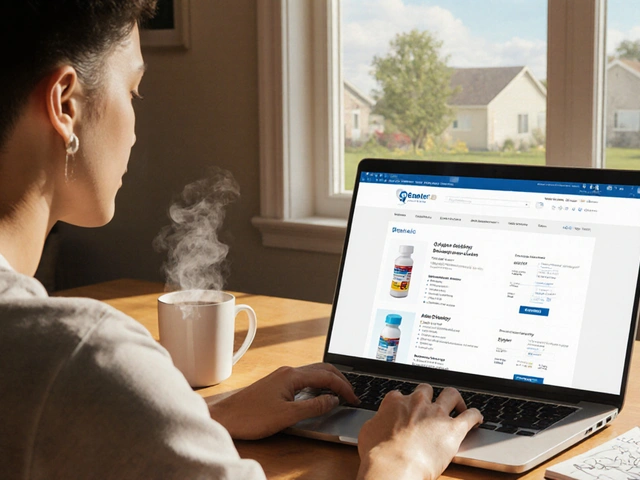
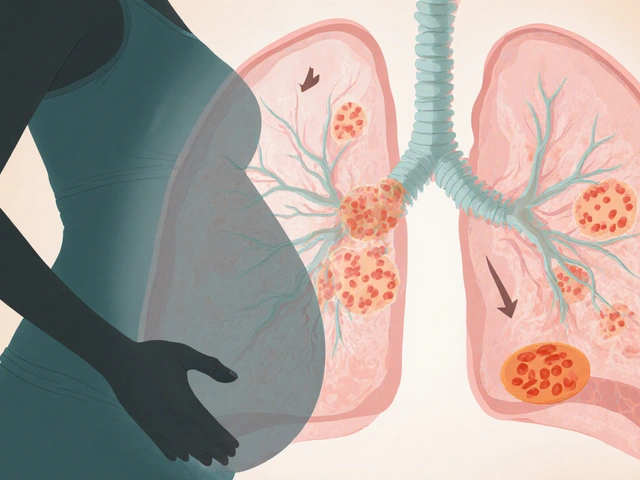

Srikanth BH
November 26, 2025 AT 09:15 AMThis is exactly what I needed to read. I started my antidepressant at full dose and nearly quit because of the nausea. Started over at 25mg like this says, and now I’m on the full dose after 6 weeks with zero issues. Your body isn’t a machine that just snaps to attention - it needs a gentle nudge, not a kick in the ribs.
Ellen Sales
November 27, 2025 AT 01:23 AMI’ve been on 12 different meds over 15 years and the only thing that ever worked was going slow... like, painfully slow... like, my doctor thought I was crazy for waiting 10 days between 5mg and 10mg... but guess what? I’m still here... and I’m functional... and I didn’t end up in the ER crying because my heart felt like it was trying to escape my chest... slow is the only way... trust the process... even if it feels like watching paint dry...
Jennifer Griffith
November 28, 2025 AT 19:58 PMidk why people make this so hard like just take the pill and deal with it bro i took adderall at 30mg day one and lived to tell the tale so chill
Kimberley Chronicle
November 30, 2025 AT 06:31 AMThe pharmacokinetic variability across CYP450 phenotypes is a critical factor often overlooked in primary care. When you factor in poor metabolizers versus ultra-rapid metabolizers, the standard titration protocols become statistically inadequate for a significant subset of the population. That’s why I advocate for preemptive genotyping - it’s not just precision medicine, it’s risk mitigation at the molecular level.
Pallab Dasgupta
November 30, 2025 AT 10:27 AMBro I was on 100mg of sertraline day one and thought I was gonna die. Sweating, shaking, felt like my brain was being rewired with a blowtorch. Then I went back to 25mg and slowly climbed. Now I’m at 75mg and actually sleep. If you’re starting high and feeling like you’re dying - you’re not weak. You’re just being rushed. Slow down. Breathe. Your body’s not your enemy.
fiona collins
December 2, 2025 AT 02:03 AMTrack everything. Even the small stuff. I wrote down 'felt weird after lunch' and realized it was the coffee. Changed my timing. No side effects since.
giselle kate
December 4, 2025 AT 01:09 AMAmerica’s healthcare system is broken. We’re too lazy to wait. We want pills to fix us in 48 hours. Meanwhile, countries with real healthcare systems have titration built into every prescription. We’re not just behind - we’re reckless.
Emily Craig
December 4, 2025 AT 04:29 AMOh wow. A whole article about not killing yourself with pills. Who knew? Next up: 'Water is hydrating' and 'Sleep helps with fatigue'. Thanks for the groundbreaking insights, doctor.
Karen Willie
December 5, 2025 AT 06:26 AMI’ve seen so many people give up on meds because they were thrown into the deep end. This is the kind of info that saves lives. Thank you for writing this. If you’re reading this and scared - you’re not alone. Start low. Stay consistent. You’ve got this.